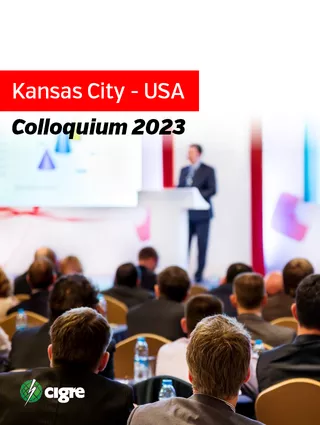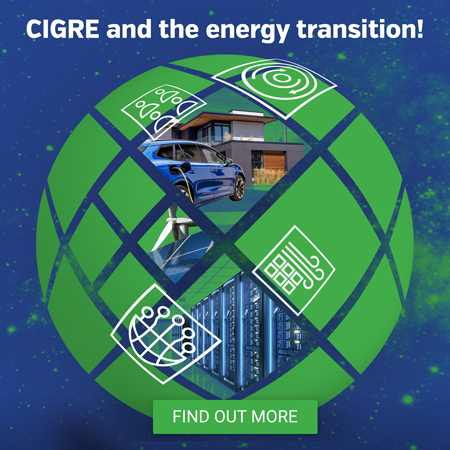Summary
- 2023-1- Drop In-Place Control Enclosure (DICE): Rolling the DICE on IEC 61850
- 2023-2- Open Fault Trace Tool – GTC Case Studies
- 2023-3- Analysis of Unexpected Line Distance Protection Operation Caused by Islanded Hydro Generation Unit
- 2023-4- Maintaining Precise Time for Power System Applications in the Event of Wide Area Loss of GPS
- 2023-5- Condition Monitoring and AI in an Asset Management World
- 2023-6- How Accelerating Trends in Transmission and Distribution (T&D) Make the Case for Digital Adoption
- 2023-7- A Review of Digital Twin Technology and an Approach for a Robust Digital Twin for Power Systems Applications
- 2023-8- DER Integration and Control Using Existing Communication Infrastructure
- 2023-9- Automated Frequency Scan Analysis Tool to Predict Resonant Frequencies at Points of Interconnection
- 2023-10- Powering the Future: Harnessing Neural Dynamic Equivalence for Enhanced Power System Applications
- 2023-11- Benchmarking the GICharm Tool against EMT Simulation
- 2023-12- The Evolution of Asset Management in the Electricity Sector
- 2023-13- Considerations for Residential Transformer Sizing Due to Electric Vehicle Adoption
- 2023-14- Protecting Phase-Shifting Transformers: A Comprehensive Approach
- 2023-15- Levelized Cost of Energy Supply for Substantiating the Proliferation of Variable Generating Units in Puerto Rico
- 2023-16- Comparative Benefit Analysis of Meshed Offshore Wind Grid
- 2023-17- Creating a Coordinated Planning Process – Resource, Transmission & Distribution Planning
- 2023-18- Islanding Procedures and Associated Impacts for Transmission Connected Inverter Resources
- 2023-19- Simulation Models of Line Protection Incidents with Solar Power Generation
- 2023-20- Building a Hardware-in-the-Loop Testing Setup for Evaluating Relays Impacted by High Penetration of Inverter-Based Resources
- 2023-21- An Approach for Screening Distribution System Ground Fault Overvoltage (GFOV) in the Presence of Inverter-based Resources
- 2023-22- Evaluation of NERC Requirements for Inverter-Based Resources (IRBs)
- 2023-23- A Multi-source Event Management Framework for Outage Detection and IBR Dynamic Performance Evaluation
- 2023-24- Screening and Identification of Critical Locations in the New England Power Network with High Percentage of Inverter Based Resources
- 2023-25- Case Studies of the Stability Benefit of Grid Forming Inverters on Energy Storage Facilities
- 2023-26- Avoiding Asynchronous Connections of Adjacent Microgrids in Self-healing Power Systems
- 2023-27- Microgrids as an Affordable Resilience Source for Rural Communities
- 2023-28- Operationalizing Peak Shaving Optimization within The Lac-Mégantic Microgrid
- 2023-29- Recloser & FLISR Applications for More Resilient Microgrids
- 2023-30- Assessment of Protection on Transmission Lines with Fixed Series Capacitors (FSC) using Hardware-in-the-Loop Testing
- 2023-31- Optimizing Substation Grounding for Distribution System Faults
- 2023-32- Testing and Characterization of Fault Scenarios of a Hierarchical DC Microgrid for Residential Applications
- 2023-33- Discovering and Diagnosing Protection Anomalies on Distribution Systems
- 2023-34- Electrification Opportunity on Distribution Systems: A Case Study
- 2023-35- Improving DER Hosting Capacity with Tie-Point Controllers and Smart BESS
- 2023-36- Unlocking Capacity in Imbalanced Distribution Circuits with Phase-EQ Technology
- 2023-37- Modelling Dynamic CVR Schemes and DER Impacts
- 2023-38- Hydropower Resilience Database for Assessing Microgrid Formation Capability and Enhancing Power Grid Resilience
- 2023-39- Enhancing Informed Decision-Making: Valuing System Upgrades through Resilience Curves
- 2023-40- A Discussion on Resilience for Power Grids
- 2023-41- Electric Utility Executive Perspectives on Modern Grid: Opportunities and Challenges
- 2023-42- Quantifying the Impact of Major Weather Events using EIA Reliability Data
- 2023-43- Pipeline Considerations for New and Repurposed Pipelines: Conversion for Pure H2 Pipelines and Blended NG/H2 Pipelines
- 2023-44- Effects of Decarbonization on Concrete Production and How Utilities can Embrace the Ensuing Innovation
- 2023-45- Prescriptive Vegetation Management Framework Using High-Resolution Satellite NDVI Imagery for Resilience Planning: A Case Study in Puerto Rico
- 2023-46- Strategies for Voltage Conversion Project Success
- 2023-47- Demonstration of a Self-healing Power System Concept using Manufacturer Specific Inverter Models
- 2023-48- Electric Field Grading Design and Validation Tests of a Composite Insulated Cross-arm
- 2023-49- Overhead Conductor Efficiency Optimization using Steel Core
- 2023-50- Does Dynamic Line Rating Work without Line Sensor Feedback?
- 2023-51- Evaluating and Comparing Substation Threat Mitigation Tactics: Substation Improvements for a More Resilient Power Grid
- 2023-52- Regional Inertia Estimation Using Ambient Synchrophasor Measurements
- 2023-53- Development of PSCAD Solar Farm EMT Models Based on PSSE RMS Models: A Step-By-Step Guide
- 2023-54- Benefits of Grid-Forming Distributed Energy Resources in Grid-Connected Scenarios
- 2023-55- Impacts and Mitigation of Distributed Energy Resources on Local Utilities
- 2023-56- Towards Just and Equitable Coordination of Distributed Energy Resources
- 2023-57- Using Receptacle-Based Sensors for Utility Fire Hazard Detection Including Loose Neutrals
- 2023-58- Keeping Up with the Landscape: Developing a Modern Alarm Philosophy for a Rapidly Changing Distribution Control Center
- 2023-59- Distribution Transformers Overloading Mitigation Using Smart Coordination Between PV Generation, Battery Energy Storage and EV Charging
- 2023-60- A Framework for Assessing Marginal Cost Pricing Through a System Reliability Lens – Is it Back to the Future?
- 2023-61- Exploring the Benefits of Demand Response in the PJM Wholesale Energy Market: A Cost-Benefit Perspective
- 2023-62- Exploring Customer Interoperability Pathways with the Utility and Grid Service Providers
- 2023-63- Resilience of Underground Power Transmission: Viability Assessment and Future Strategies
- 2023-64- Similarities and Differences to Horizontal Directional Drilling Design and Construction Considerations in Gas Pipeline and Cable System Projects
- 2023-65- A FEM Case Study of Cable Ampacity Versus Laying Depth and Time
- 2023-66- Advanced Metering Infrastructure as a Key Program in LUMA Energy’s Grid Modernization
- 2023-67- Maximizing Load Reduction Using AMI-Informed Emergency Voltage Reduction Ahead of Blackouts
- 2023-68- 15 Years Continuous Journey Securing and Managing Edge Devices
Additional informations
| Publication type | Colloquia |
|---|---|
| Reference | COLL_KAN_2023 |
| Publication year | |
| Publisher | CIGRE National Committee |
| Price for non member | Free |
| Price for member | Free |



